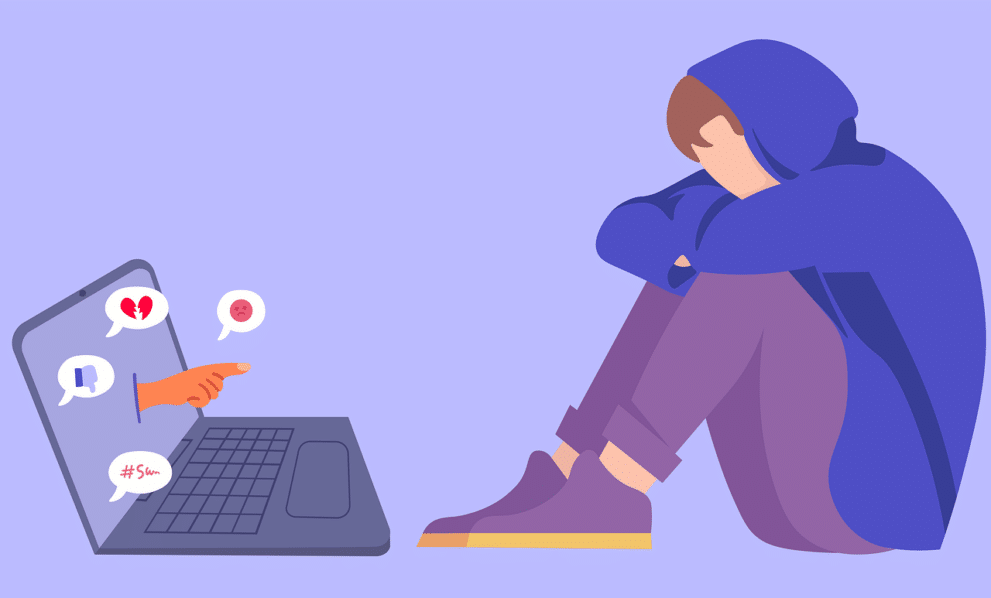
Social bullying, also known as relational bullying or social aggression, refers to a form of bullying that involves manipulating, excluding, or socially isolating someone in order to harm, control, or intimidate them. It primarily takes place within social relationships and groups, such as schools, workplaces, or online platforms.
Social bullying is characterized by various behaviors aimed at undermining an individual’s social standing, relationships, or sense of belonging. These behaviors may include:
- Spreading rumors or gossip: False or damaging information is circulated about a person, often with the intent of tarnishing their reputation or social status.
- Exclusion or rejection: Deliberately excluding an individual from social activities, groups, or events, making them feel isolated and left out.
- Ignoring or ostracizing: Ignoring or giving the silent treatment to someone, intentionally isolating them and withholding social interaction.
- Public humiliation: Mocking, ridiculing, or embarrassing someone in front of others, often using verbal or non-verbal means.
- Cyberbullying: Using digital platforms, such as social media, to engage in bullying behaviors, including spreading rumors, posting hurtful comments, or sharing embarrassing content online.
- Manipulation of friendships: Encouraging others to exclude or turn against an individual, often through manipulative tactics or coercion.
The goal of social bullying is to damage a person’s social relationships, self-esteem, and overall well-being. It can have significant emotional, psychological, and social consequences for the targeted individual, leading to feelings of loneliness, depression, anxiety, and a sense of powerlessness.
It is essential to recognize and address social bullying promptly. Creating supportive and inclusive environments, promoting empathy and understanding, and implementing anti-bullying policies can help prevent and combat social bullying.
How common is online bullying?
Online bullying, also known as cyberbullying, has become increasingly prevalent with the widespread use of digital communication platforms and social media. While it is challenging to provide precise statistics on the prevalence of online bullying due to various factors such as underreporting and differences in research methodologies, several studies have shed light on its frequency. Here are some key findings:
- Global prevalence: According to a survey conducted by UNICEF across 30 countries, approximately one in three young people aged 13 to 24 have experienced online bullying.
- Age group: Research often focuses on adolescents and teenagers, who tend to be more active users of online platforms. Studies have indicated that around 15% to 25% of adolescents have experienced cyberbullying at some point.
- Gender differences: Research suggests that girls may experience higher rates of cyberbullying perpetration and victimization compared to boys. However, it’s important to note that both genders can be affected by online bullying.
- Social media platforms: Certain platforms are more commonly associated with cyberbullying incidents. For example, studies have indicated higher rates of cyberbullying on platforms such as Facebook, Instagram, and Twitter.
- Impact on mental health: Cyberbullying can have significant negative effects on the mental well-being of individuals. Victims of cyberbullying may experience increased levels of anxiety, depression, loneliness, low self-esteem, and even suicidal thoughts.
Efforts are being made to address online bullying and promote safer online environments. Many social media platforms have implemented reporting mechanisms, community guidelines, and measures to prevent and address cyberbullying. Additionally, educational programs and campaigns aim to raise awareness about the consequences of online bullying and promote digital citizenship and respectful online behavior.
It is crucial for individuals to be aware of the potential risks of cyberbullying, take steps to protect themselves, and seek support if they encounter online bullying or witness it happening to others.
How do you deal with an online bully?
Dealing with an online bully can be challenging, but there are steps you can take to address the situation effectively. Here are some strategies to consider:
- Do not engage: It’s important not to respond directly to the bully or retaliate with negative comments. Engaging with them may escalate the situation further and provide them with the attention they seek.
- Preserve evidence: Take screenshots or save any evidence of the bullying, including messages, comments, or posts. This documentation can be useful if you decide to report the bullying to authorities or the platform administrators.
- Block or mute the bully: Most social media platforms and messaging apps provide options to block or mute individuals. Blocking the bully can help prevent further communication and reduce their impact on your online experience.
- Report the bullying: Utilize the reporting mechanisms provided by the platform to report the bully’s behavior. Provide the necessary details and evidence to support your report. Platforms often have policies against cyberbullying and may take action against the perpetrator.
- Seek support: Talk to someone you trust about what you’re experiencing, such as a friend, family member, or teacher. They can provide emotional support and guidance on how to handle the situation. If you’re a student, inform a trusted adult at your school, as they may be able to intervene or provide further assistance.
- Practice self-care: Online bullying can be distressing, so prioritize your well-being. Engage in activities that make you feel good, spend time with supportive friends and family, and consider seeking professional help if the bullying has a significant impact on your mental health.
- Adjust privacy settings: Review and adjust your privacy settings on social media platforms to control who can see your posts and interact with you. Limiting access to your profile can reduce the likelihood of being targeted by online bullies.
Remember that everyone’s situation is unique, and it’s essential to assess what feels most appropriate and safe for you. If the online bullying escalates, persists, or involves threats of harm, it may be necessary to involve law enforcement or seek legal advice in extreme cases.
Lastly, consider educating yourself about online safety, practicing responsible online behavior, and promoting kindness and respect in your own interactions online.



 Share
Share Tweet
Tweet Share
Share




Comment